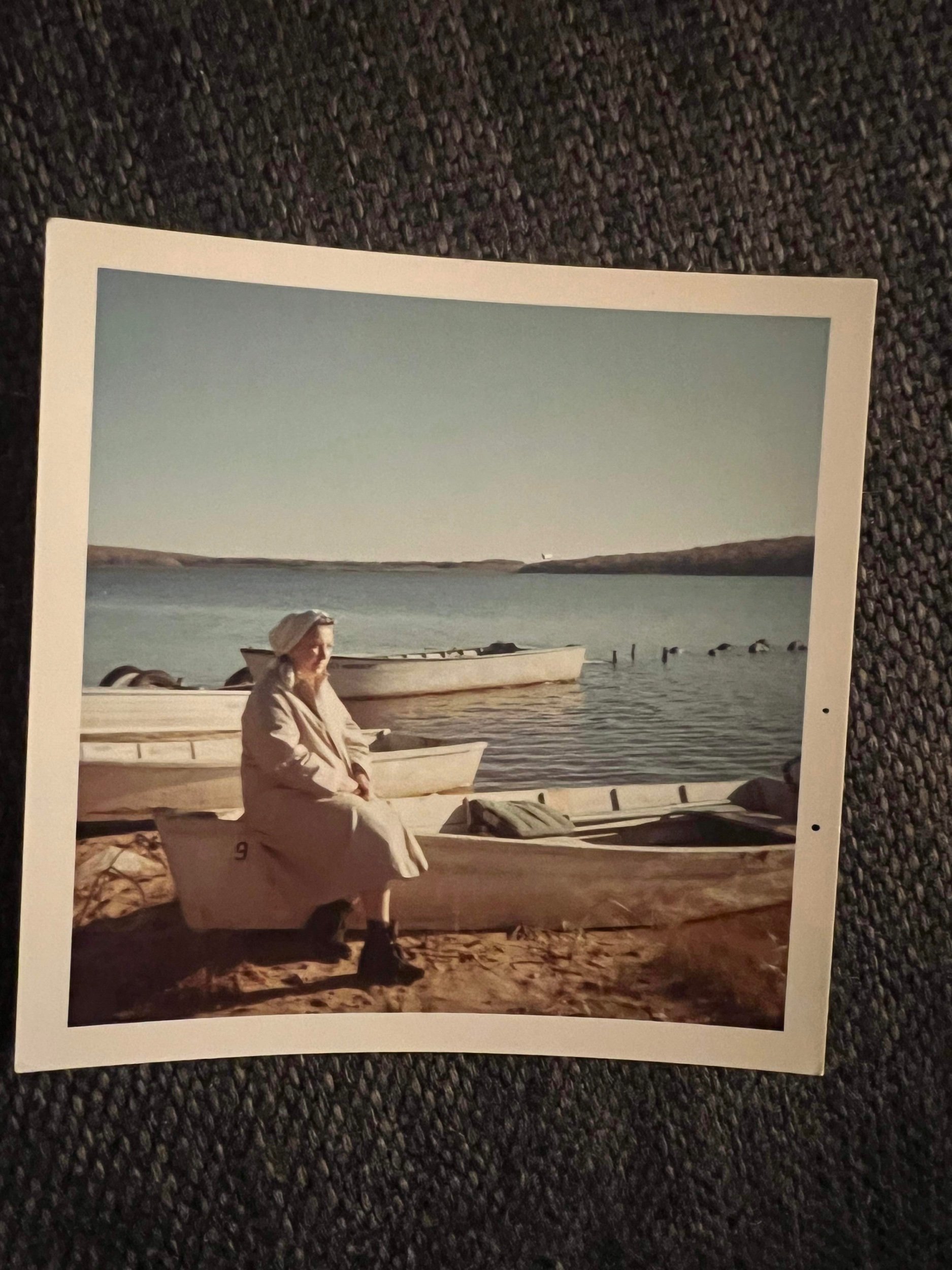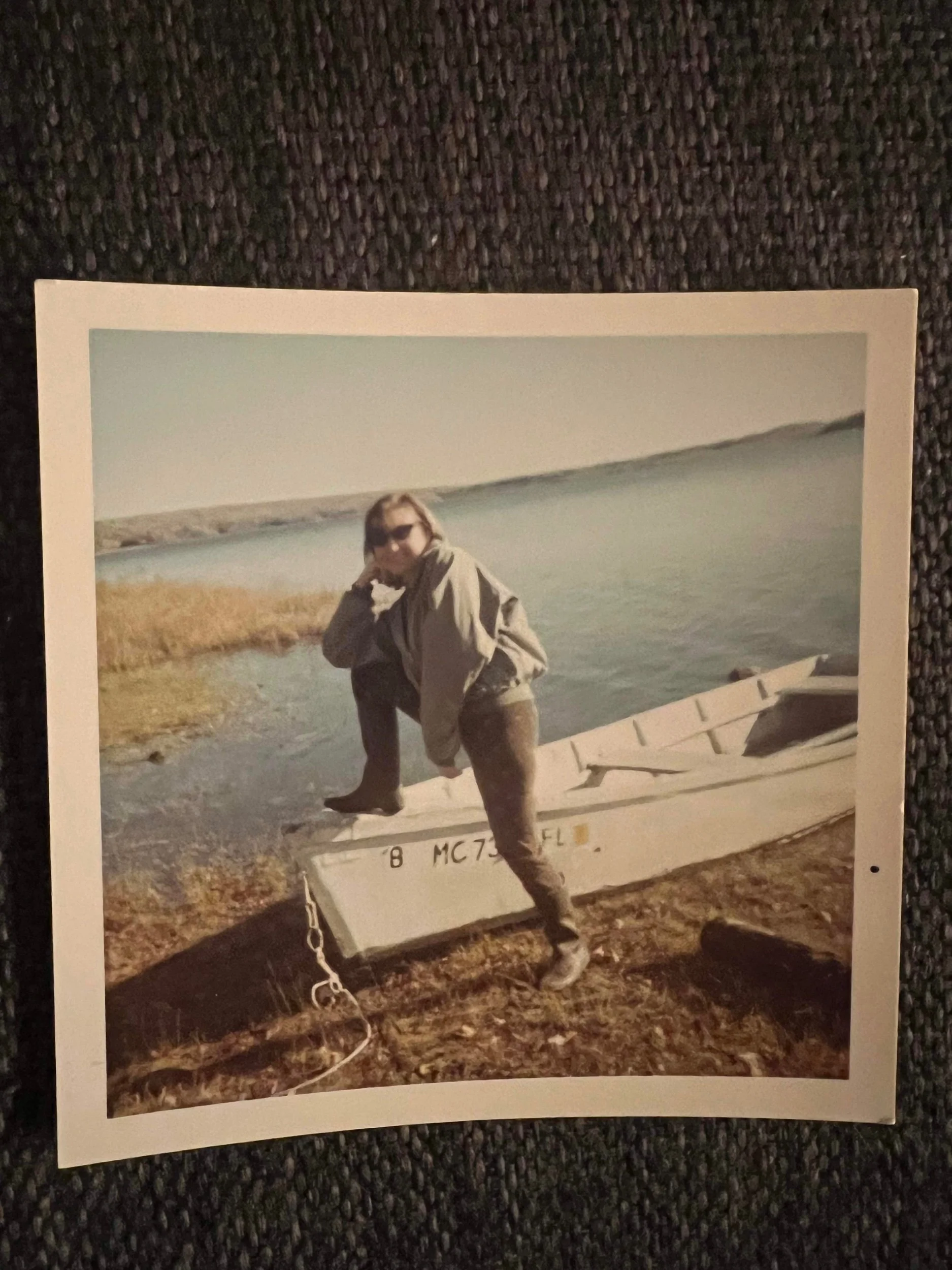The Queen Mary and her flotilla
The original boats at the cabins were very heavy, long wood models with two bench seats and handpainted numbers on their bright, white hulls. “Substantial” is an apt description of these rowboats. Some of the cabin regulars even referred to one as The Queen Mary.
These boats were simple but real beauties, riding low in the water and moving sleekly through the waves. They were primarily used as rowing boats back then as outboard motors were more of an extravagance. Getting in a boat was mostly for fishing or just going for a ride on the water — a peaceful, quiet experience rather than a race for speed and an open throttle.
I find these boats quite romantic and can picture a woman from the city with a pretty parasol being rowed around the lake by her beau. Or maybe two local gals out catching dinner, or some teenage boys basking in the sun and out for a joy row/ride!
Unfortunately, anything wooden in water is prone to rot and deterioration so these big, beautiful boats were slowly retired. The Queen and her court were in service until the late 1950s when they were slowly replaced by aluminum StarCrafts and newer fiberglass models, some of which are still used today.
Norwegian-American Ole Evinrude was the inventor of the first commercially successful outboard motor. Evinrude began work on this project in 1906 in Milwaukee and by 1909 had developed a one-cylinder rated at 1.5 horsepower.
The oldest recovered boat in the world is the Pesse canoe, a dugout made from the hollowed tree trunk of a Pinus sylvestris and constructed somewhere between 8200 and 7600 BC. This canoe is exhibited in the Drents Museum in Assen, Netherlands.
Photos courtesy Manninen archives, Karen Corso, Evinrude historical collections.




